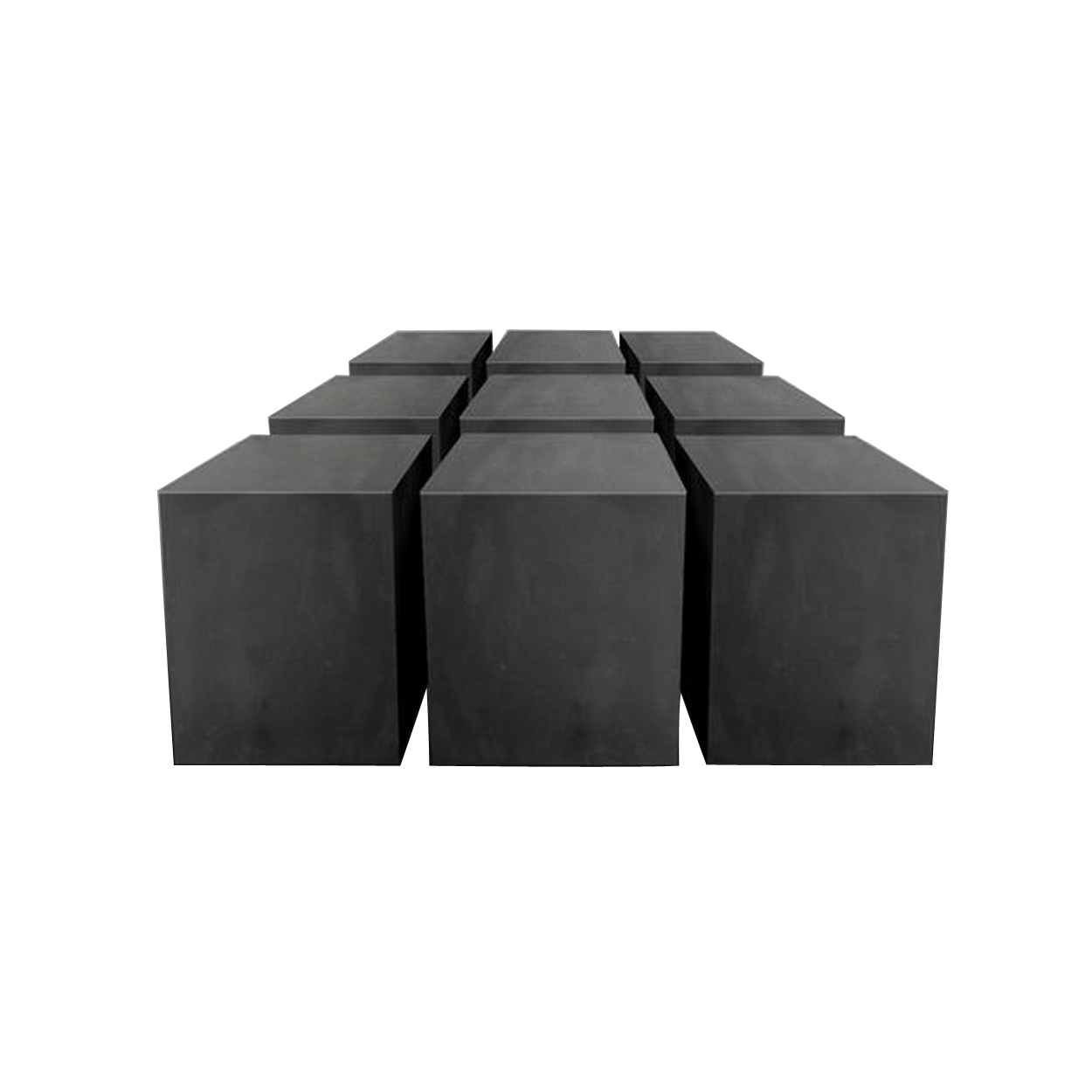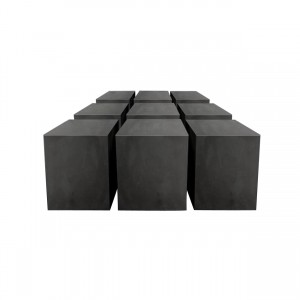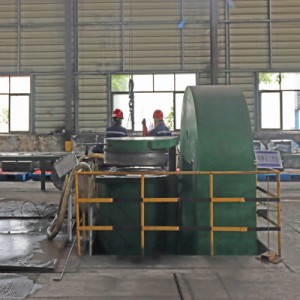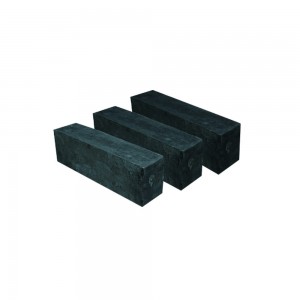Isosatic Graphite
Features of isostatic pressing technology
(1) The density of isostatic pressing products is high, which is generally 5%-15% higher than that of unidirectional and two-way molding. The relative density of hot isostatic pressing products can reach 99.80%-99.99%.
(2) The density of the compact is uniform. In compression molding, whether it is one-way or two-way pressing, the green compact density distribution will be uneven. This density change can often reach more than 10% when pressing products with complex shapes. This is caused by the frictional resistance between the powder and the steel mold. Isostatic fluid media transfer pressure, equal in all directions. The compression of the envelope and the powder is roughly the same. There is no relative movement between the powder and the envelope. There is little frictional resistance between them, and the pressure drops only slightly. The density drop gradient is generally less than 1%. Therefore, it can be considered that the blank The bulk density is uniform.
(3) Because of the uniform density, the production aspect ratio can be unlimited, which is conducive to the production of rod-shaped, tubular, thin and long products.
(4) The isostatic pressing molding process generally does not need to add lubricant to the powder, which not only reduces the pollution to the product, but also simplifies the manufacturing process.
(5) Isostatically pressed products have excellent performance, short production cycle and wide application range.
(6) The disadvantage of the isostatic pressing process is that the process efficiency is low and the equipment is expensive.
Characteristics of isostatic graphite materials
(1) Isotropic
Generally, materials with an isotropy degree of 1.0 to 1.1 are called isotropic materials. Due to the isostatic pressing, the isotropy of isostatic graphite can be within 1.0 to 1.1. The isotropy of isostatic graphite is affected by the heat treatment process, the isotropy of the powder particles and the molding process.
In the heat treatment process of isostatic graphite, heat is gradually transferred from the outside to the inside, and the temperature is gradually reduced from the outside to the inside. The uniformity of the external temperature is better than the uniformity of the internal temperature. Homotropy is better than internal.
After the binder pitch is graphitized, the microcrystalline structure formed has little effect on the isotropy of the graphite block. If the isotropy of the powder particles is good, even if the compression molding is used, the isotropy can be prepared. Graphite with good homogeneity.
In terms of molding process, if the binder pitch and powder are not uniformly kneaded, it will also affect the isotropy of the isostatic graphite.
(2) Large size and fine structure
It is impossible to prepare carbon products with large specifications and fine structures by compression molding. To a certain extent, isostatic pressing can overcome the shortcomings of uneven product volume density caused by compression molding, greatly reduce the probability of product cracking, and make the production of large-size and fine-structure products a reality.
(3) Homogeneity
The internal structure of isostatic graphite is relatively uniform, and the bulk density, resistivity and strength of each part are not much different. It can be regarded as a homogeneous graphite material. The homogeneity of isostatic graphite is determined by the pressing method of isostatic pressing. When isostatic pressing is used, the pressure transmission effect along the pressing direction is the same, so the volume density of each part of the isostatic pressing graphite is uniform.







